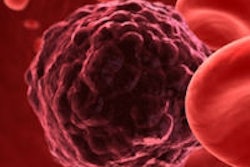A team led by University of California, San Francisco (UCSF) researchers has called for simplified guidelines on when to biopsy thyroid nodules for cancer, which they say would result in fewer unnecessary biopsies.
Their recommendation, based on a retrospective study published in JAMA Internal Medicine (August 26, 2013), is to biopsy patients only when imaging reveals a thyroid nodule with microcalcifications or one that is larger than 2 cm in diameter and completely solid. Any other findings represent too low a risk to require biopsy or continued surveillance for cancer, the scientists concluded.
"Compared with other existing guidelines, many of which are complicated to apply, following these simple, evidence-based guidelines would substantially decrease the number of unnecessary thyroid biopsies in the U.S.," said lead author Rebecca Smith-Bindman, MD, a UCSF School of Medicine professor with the department of radiology and biomedical imaging and the department of epidemiology and biostatistics. "Right now, we're doing far too many thyroid biopsies in patients who are really at very low risk of having thyroid cancer."
The research team analyzed the medical records of 8,806 patients who underwent 11,618 thyroid ultrasound examinations at a UCSF inpatient or outpatient facility from January 2000 through March 2005. The patients did not have a diagnosis of thyroid cancer at the time of the ultrasound but were referred to ultrasound for a variety of reasons, such as a physician's suspicion that a patient had a nodule, an abnormal thyroid function test, or a CT or MRI examination that revealed the presence of at least one nodule.
The researchers linked the patients with the California Cancer Registry and identified 105 who were diagnosed with thyroid cancer. The cancer patients were matched with a group of cancer-free control subjects from the same cohort, based on factors such as gender, age, and the year of the ultrasound exam.
Six of the paper's eight authors then reviewed those patients' ultrasound images without knowing whether the image came from a cancer patient or a control, and characterized what the thyroid looked like based on 11 characteristics, including the presence and appearance of nodules, blood flow, and calcifications.
The authors found that while 97% of the cancer patients had at least one nodule, 56% of patients without cancer had nodules as well. In addition, more than 98% of detected nodules in the study were benign, not malignant cancers, they noted.
Ultimately, the researchers identified only three significant ultrasound imaging findings that indicated an increased chance of thyroid cancer: microcalcification, a nodule diameter greater than 2 cm, and a nodule that was solid rather than cyst-like.



















